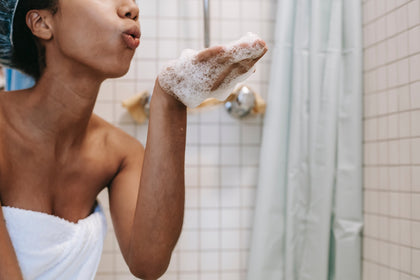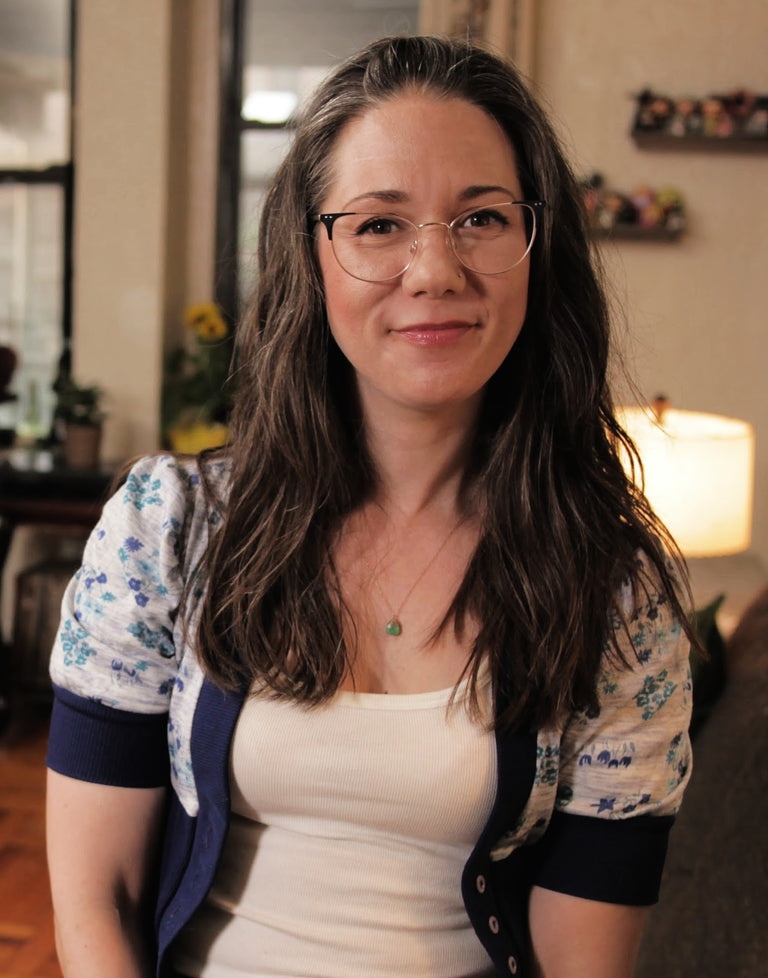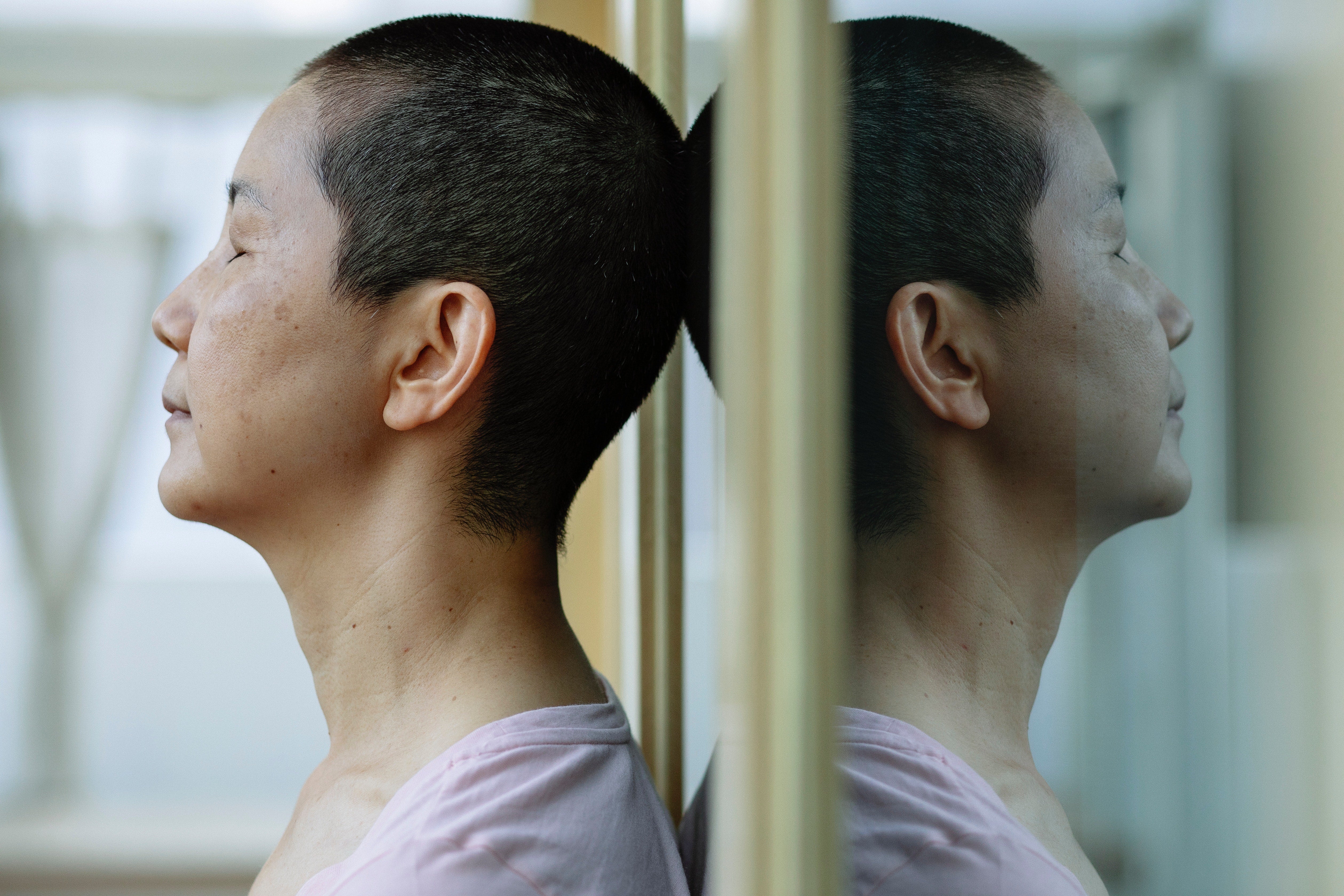Daily hair washing with shampoo is a relatively new hygienic routine for humans. Conventional shampoo has only became commercially available in the last hundred years or so, and today many people have become accustomed to shampooing on a daily basis.
If you're someone that cares for your hair you might have heard of the “no-poo method.” It's a hair washing trend that involves skipping shampoo and has become more popular in recent years. But what is the no-poo method, exactly? Do you need to wash your hair every day? How does it work? Should you try going no-poo? Keep reading to understand what the n-poo method is, how it works, and how you can incorporate this method into your routine to promote optimal scalp wellness and encourage healthier-looking hair.
What Is the No-Poo Method, Exactly?
While it’s hard to say exactly when the no-poo method started to gain traction, it’s a hair care trend that has attracted considerable attention over recent years, with a community of no-poo enthusiasts extolling the benefits of going no-poo to anyone with hair.
“There are many different ways to do no-poo washing, but the core of the method is to wash your hair without shampoos,” said Dr. Harikarin Chekuri, a plastic surgeon and hair transplant specialist with ClinicSpots.
“The idea behind this is that shampoos contain lots of harsh chemicals that are stripping your hair of oils. The no-poo method is simply letting your hair oils build up over time, then washing your hair without stripping it of its natural oils.”
The no-poo method doesn’t mean not washing or cleaning your hair, but it does mean ditching shampoo.
If you’re someone who washes their hair daily, you might wonder why someone would stop using shampoo. In addition to making your hair smell nice, shampoo is used to help cleanse the scalp of all the environmental gunk you face day-to-day like dirt, pollution, sweat, dead skin cells and styling products.
Cleansing is important for scalp health, but shampoo is not the only way to cleanse your hair. Those who choose no-poo often want to avoid the harsh detergents (also called surfactants), preservatives and other additives that are in many shampoos. Why? Because while shampoos might be good at cleansing, as Dr. Chekuri hinted earlier, they might be a little too good.
Depending on their formulation, some shampoos can strip your hair of sebum, which are the natural oils that our scalp produces to naturally condition and protect each hair shaft. Proponents of the no-poo method prefer not to strip their hair of these natural oils and use other ways to cleanse the scalp and hair.
Read More: 9 Ingredients In Shampoo That You Should Avoid
The Benefits of Going No-Poo
According to Dr. Chekuri, the main advantage of no-poo is that it's much easier on your hair. For people who have sensitive skin or find themselves allergic to ingredients commonly used in shampoo, cleansing without shampoo can save a lot of irritation and itching while at the same time improving their scalp’s overall health.
Others love no-poo because it can be more environmentally friendly since it cuts out potentially damaging chemicals and excess plastic waste.
People with color treated hair might choose no-poo to help preserve their color for longer. Still others who love the no-poo method report that their hair looks healthier and less frizzy and becomes stronger and less prone to breakage.
“Frequent washing, especially with products containing harsh chemicals, can strip away all of the natural oils in your hair and scalp, causing dryness, irritation and excessive oil production,” said Emiliano Vitale, hair stylist and owner of é Salon.
While there’s currently no no-poo-specific scientific research to support these claims, people who love it claim that by not stripping their scalps of natural oils, their hair actually becomes less oily over time. This might be because the sebaceous glands aren’t working overtime to produce more oil every time they shampoo.
“As a hairstylist, I have seen firsthand that going no-poo can actually make your hair look and feel better than when you were using commercial shampoo and conditioner,” said Arrogant Smith, professional hairstylist and the hair consultant with Kes Wigs. “By going no-poo, you are allowing your scalp to produce its own oils, which leads to healthier hair.”
Shop: Jaclyn Gibson's Top VEGAMOUR Picks
Potential Cons of the No-Poo Method
One thing that both hair and health professionals agree on is that the no-poo method is not for everyone.
“Some people find that it works well for them, while others do not,” said Lauren Udoh, the creative director of Wig Reports.
Dr. Alpana Mohta, a board-certified dermatologist with Better Goods, cautions that for some people the no-poo method might be best avoided. “For people with an underlying skin condition like scalp psoriasis, seborrheic dermatitis or those with any bacterial or fungal infections of hair, the no-poo method can cause more harm than good,” she said.
If your hair is very oily or you work in a profession where your hair picks up a lot of environmental odors, no-poo might be no fun. Not only that, but there is a lengthy and often uncomfortable adjustment period while your scalp recalibrates to the new routine.
“The main disadvantage of going no-poo is that it takes a while for your scalp to adjust, and some people find that their scalp gets dry or itchy initially,” said Smith.
If you use styling products like mousse, hair spray and dry shampoo regularly, the no-poo method might make it hard to fully cleanse your hair and scalp of product build-up. Over time this can impact hair and scalp health. Check out this before and after from using GRO Dry Shampoo!
Read More: 6 Ways to Tackle Scalp Buildup Today
Maintaining scalp health in the face of build-up is one of the main reasons VEGAMOUR developed our GRO Scalp Detoxifying Serum. Formulated with a proprietary vegan silk protein that gently removes persistent scalp build-up, this scalp treatment actively helps to soothe scalp damage while providing a semi-permeable barrier that protects the scalp from harmful environmental pollutants.
6 Ways to Try the No-Poo Method
“There are many different ways to do no-poo,” said Dr. Chekuri. Since no-poo doesn’t mean no cleansing, there are different approaches to the method.
One variable that you can play with is frequency. For some, cleansing once or twice a week might be ideal. Others might need to cleanse even less. Ultimately it comes down to finding the right balance and rhythm for your scalp once it has adjusted to the new method.
Speaking of cleansing, how do people who do no-poo actually cleanse their hair? Again, this is a variable that you can play with to find the right method for you. Common ways to do no-poo include:
- Water Only Method: Simply rinse your hair with just water.
- Apple Cider Vinegar: Use a combination of apple cider vinegar (ACV) and water to help balance scalp pH, cleanse and boost shine.
- Baking Soda: Combine baking soda powder and water to create a paste that can be used to scrub the scalp. Some no-pooers follow this step with an ACV rinse .
- Conditioner Only: Also known as “the curly girl method” or “co-washing,” in this no-poo method you cleanse your hair with conditioner instead of shampoo.
- Coconut Oil: Like the conditioner option, coconut oil is rubbed into the scalp and hair, then rinsed. Since coconut oil repels water, it leaves hair conditioned and moisturized.
- No-Poo Products: There are a variety of no-poo products available featuring different natural cleansing ingredients that can be used as shampoo alternatives.
“I think it's important to experiment with different methods to see what works best for you,” said Smith. Ultimately the best way to do no-poo will come down to your scalp’s individual needs, and there are many ways to mix and match frequency with ways to cleanse.
Who Should Try the No-Poo Method?
If your hair and scalp are relatively healthy, there aren’t a lot of downsides to trying the no-poo method of hair cleansing. “The best way to know if no-poo method is meant for you is to try it out for yourself,” said Dr. Mohta. With that said, there are some things to bear in mind.
No matter the cleansing method and frequency you choose, there will be a transition period that can take several weeks before your scalp recalibrates and rebalances. Many no-poo proponents claim the first few days are the hardest. “You can expect your hair to feel oily, unclean and possibly even a bit smelly for the first few weeks while your hair adjusts,” said Vitale.
“After a week or two, there’s a noticeable difference in how hair looks or feels, but everyone’s hair is different,” said Dr. Anna Chacon, a board certified dermatologist with MyPsoriasisTeam. “For some, it takes four to six weeks for hair to level out.”
Achieving the results you’re looking for with the no-poo method will likely require some patience, but for those who have mastered it, their patience and persistence will pay off in the form of healthy, fuller-looking locks.
The Takeaway
The no-poo — also known as the "no shampoo" — method of hair cleansing is a popular hair care trend that involves eliminating the use of regular shampoo to wash hair. Instead, people going the no-poo route use plain water, cleansing conditioners or natural products such as baking soda, apple cider vinegar and other ingredients to cleanse their hair. If you have a healthy hair and scalp there are few risks in trying the no-poo method, but be aware that it can take up to several weeks for your scalp to recalibrate, especially if you currently wash with shampoo everyday.
#include-related-slider#
More From VEGAMOUR
- Shop: Top VEGAMOUR Picks for Men
- These Ingredients in Shampoo Might Contribute to Hair Loss
- How Often Should You Wash Your Hair?
- Explore Tia Booth's VEGAMOUR Picks




















